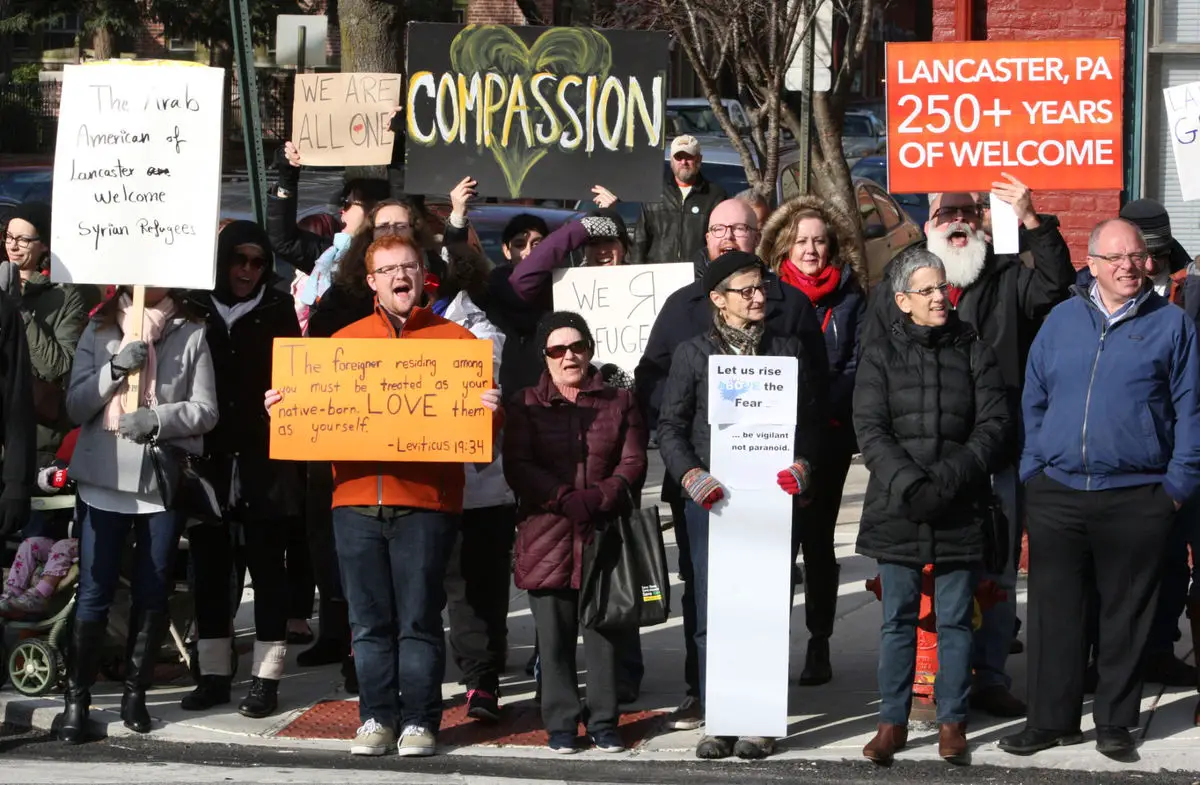It is safe to assume that few, if any, students can pinpoint Lancaster, Pennsylvania, on a map.
I’d also wager that fewer still can guess the origin of this obscure county’s name. For those of you uncultured lads and lasses that don’t know, the word Lancaster comes from an old English word for “river fort.”
It’s both a fitting and ironic name for the county, whose small namesake city sits perched adjacent to the shores of the Susquehanna River. What else would you name a colonial river town founded in 1729? The irony of such a naming is subtle, though, and lies in a much more recent history. Let me explain.
Remember the guy who ran for president a few months back and shocked the world when he won? The guy who had a thing for walls? On election night, it turns out Lancaster county thought this man would do an excellent job running the country, which makes sense. It’s not surprising that a town named after a river-fort supports the gentleman who promises more protective walls.
Forts and walls are both fairly large structures that keep out the bad guys, but who are the bad guys? For President Trump, it’s the immigrants, refugees and asylum seekers. Since taking office, the 45th president has done his best to keep these evildoers from destroying the pristine city on a hill that is America. Despite slacking on the wall promise, he’s been charging full-steam ahead on his new and improved anti-evil-doers plan, the refugee ban.
Though highly contentious and arguably unconstitutional (That’s what the 9th circuit unanimously ruled, but what the hell do they know), the refugee ban is fairly straightforward. To provide a quick summary, the ban attempts to place a hold on people wishing to travel to the United States from seven countries, specifically Iran, Iraq, Libya, Somalia, Sudan, Syria and Yemen.
Though Trump has been forced to restructure his ban due to the decision of the 9th circuit, he has submitted a second revised order, which was also challenged by a multitude of states and organizations. This article is not about the ban, though, but rather it is about the city of Lancaster and its link to those affected by the order.
I wonder what the conservative pals back at the ole river fort have to say about refugees? Though they are probably disappointed by the lack of a wall, surely, they must be ecstatic about the possible application of such a ban. After all, the county of Lancaster voted overwhelmingly that it was Trump, the wall builder, whom they wanted for president.
Here’s where the subtle irony comes in. Lancaster, the conservative river fort that wanted a president who would build more walls, takes in 20 times more refugees per capita than the rest of the nation. Let that sink in. The town and county’s very name was meant to conjure up the idea of protecting Americans from foreign forces.
The region voted 57 percent for Trump, compared to 37 percent for Hillary, yet the region has, in the past 15 months, welcomed nearly 1,000 refugees, 182 of which hail from countries that fall under those barred through Trump’s ban. Not only has the county and city allowed these strangers to settle in their communities, but many have stood in solidarity with them, through the worst of Trump’s attacks on refugees.

In late January, nearly a thousand gathered, packing a local bar to near capacity. The refugee-benefit concert was designed to raise money and show support to refugees following the announcement of Trump’s original ban. The massive turnout and the 28,000 dollars raised for Church World Service, a non-profit that resettles refugees, illustrated the overwhelming refugee support from Lancaster citizens.
This illustrates the gap between political rhetoric and reality. The vast majority of Lancaster’s population believed in the rhetoric presented by President Trump, or at least enough of it to vote for him. Yet, Trump’s platform was based on a system of beliefs that attacked the same individuals that were shown support and hospitality by the people of Lancaster.
While I am not naïve enough to believe that there are not some within the Lancaster community who are vehemently opposed to the introduction of refugees into their communities, the overarching attitude is undoubtedly a welcoming one. Thus, it is obvious that there is serious disparity between the local political beliefs and the actions of the community.
This is not simply an issue for rural Pennsylvania. The extreme partisanship of the nation forces Americans to choose a side. Though they may agree with a large amount of a party’s politics, it is unlikely that they agree with every position the party’s candidate holds. Though they may have supported Trump’s economic-trade policies or tax plans, their views on immigration could have been vastly different.
Often times, it’s difficult to put a face to a political view. In theory, it is easy to condemn faceless foreigners as freeloaders and potential terrorists, yet when one comes face to face with a foreigner, those political views tend to soften. It is much harder, though still possible, to direct racism toward a family with whom your child shares a school, a team or a friendship.
You can take several big ideas from Lancaster’s refugee situation. First, actions are not always reflected by political views or voting decisions, and vice versa. Second, it is too easy to think of political stances as beliefs that are detached from people and consequences.
And last, refugees have been able to integrate successfully into American communities, even conservative ones. Going forward, keep these realities in mind when considering the issue of accepting refugees into the nation.

















